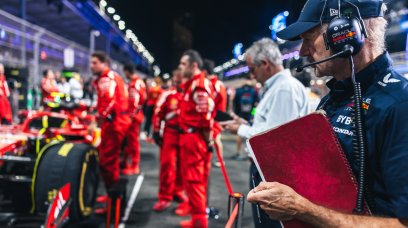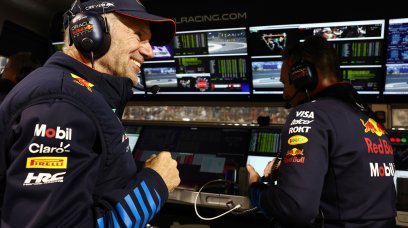As analysed here in December , there are compelling reasons for Ford to enter Formula 1 as technical partner to Red Bull Powertrains: not only does the Blue Oval, currently splitting itself into Ford Blue (internal combustion engined vehicles or ICE) and Ford Model e (battery electric vehicles or BEV) divisions, gain an expedited, cost-effective dual-stream presence on the F1 grid, but does so as partner to F1’s reigning double champions. Clearly the FIA’s 2026 power unit regulations, designed for 1000bhp with a 50/50 ICE/hybrid split, and the sport’s burgeoning popularity (particularly in the USA, Ford’s major market) are the primary drawcards, with the opportunity to ‘buy’ into an FIA-registered, turn-key PU operation owned by the eponymous energy drinks brand provides obvious global marketing opportunities beyond those provided by F1. However, ‘buying’ into the project will inevitably lead to derogatory accusations of ‘badge engineering’ as already hurled about by existing teams – and, it must be said, by sectors of the media - at Cadillac, which hopes to enter with Michael Andretti should the US team operated by the scion of the USA’s premier racing family be accepted under the FIA’s Expression of Interest process announced earlier this week. Such accusations, though, blindly overlook that many current teams historically benefitted from such arrangements: the Ford DFV, which enabled the likes of McLaren, Tyrrell (now Mercedes) and Williams to establish F1 teams during the 1960s, was a Cosworth unit bankrolled by Ford in exchange for tappet cover badging. Indeed, in 1981 Williams replaced ‘Ford’ with ‘Cosworth’ as the team was Leyland sponsored … Ditto Sauber (now Alfa Romeo) and Jordan (now Aston Martin) during the nineties raced with Ford-badged Cosworth units, while Red Bull has its roots in Stewart Grand Prix, which was totally bankrolled by Ford and powered by Cosworth. Ferrari was not averse to badge-engineering, either: Sauber’s Petronas engines were none other than rebadged Ferrari V10s; the Mercedes HPP powertrain operation started off as Ilmor. Red Bull’s aborted Porsche partnership provides another case in point: The project would have been Red Bull Powertrains in all but name, yet that was hailed by all and sundry until it fell apart over Porsche’s demands. Yet, ironically, when Ford is enters into a similar arrangement it is criticised by teams with badge engineering in their DNA. The fact that Red Bull has teamed up with Ford – all while still being contracted to Honda, which was another potential partner given their recent shared successes - points to a shared vision, a road map that arguably delivers more for both entities than the Porsche partnership could have provided. In fact, at one stage Red Bull was prepared to go it alone unless the perfect ‘fit’ eventuated.
So much, though, for history; looking forward to PU2026, branded tappet covers will effectively be unimportant: Where Cosworth’s 1960s effort was all about forcing maximum gas flow through cylinder heads to drive the rear wheels, under the new regulations the V6 turbo’s role is as 50% contributor to PU performance. Indeed, the FIA projects a 350kW ICE/350kW hybrid split for a total of 700kW (940bhp) as shown by the flowchart above. Given that current V6s deliver around 800bhp complemented by 160bhp hybrid systems, that points to a massive downgrading of ICE tech and a corresponding ramping up of hybrid power. It follows that tappet covers are no longer of prime importance… and that energy (re)generation is the new focus for F1. However, both the energy store (battery) and energy recovery are heavily regulated, leaving one untapped area: deployment software. That is precisely where Ford’s army of software developers can make a crucial performance difference to PUs, in turn applying such lessons in road cars - whether BEV- or hybrid ICE-powered. In fact, last year Ford announced a $1bn project to convert Michigan’s Central Station into a hi-tech hub aimed at software development. Google immediately joined as founder member, which illustrates the gravity of the project. Thus, the foregoing points to more ‘Ford’ technology being applied under the engine cover of its partner cars than during the Cosworth eras, with the problem being one of perception. Where tappet covers were highly visible items during the 1960s, software is the polar opposite and it follows that Ford will not have tangible platform for its input, creating misguided accusations of badge engineering will be directed at the Blue Oval. But that invisible input could make the crucial difference.
Most read




















